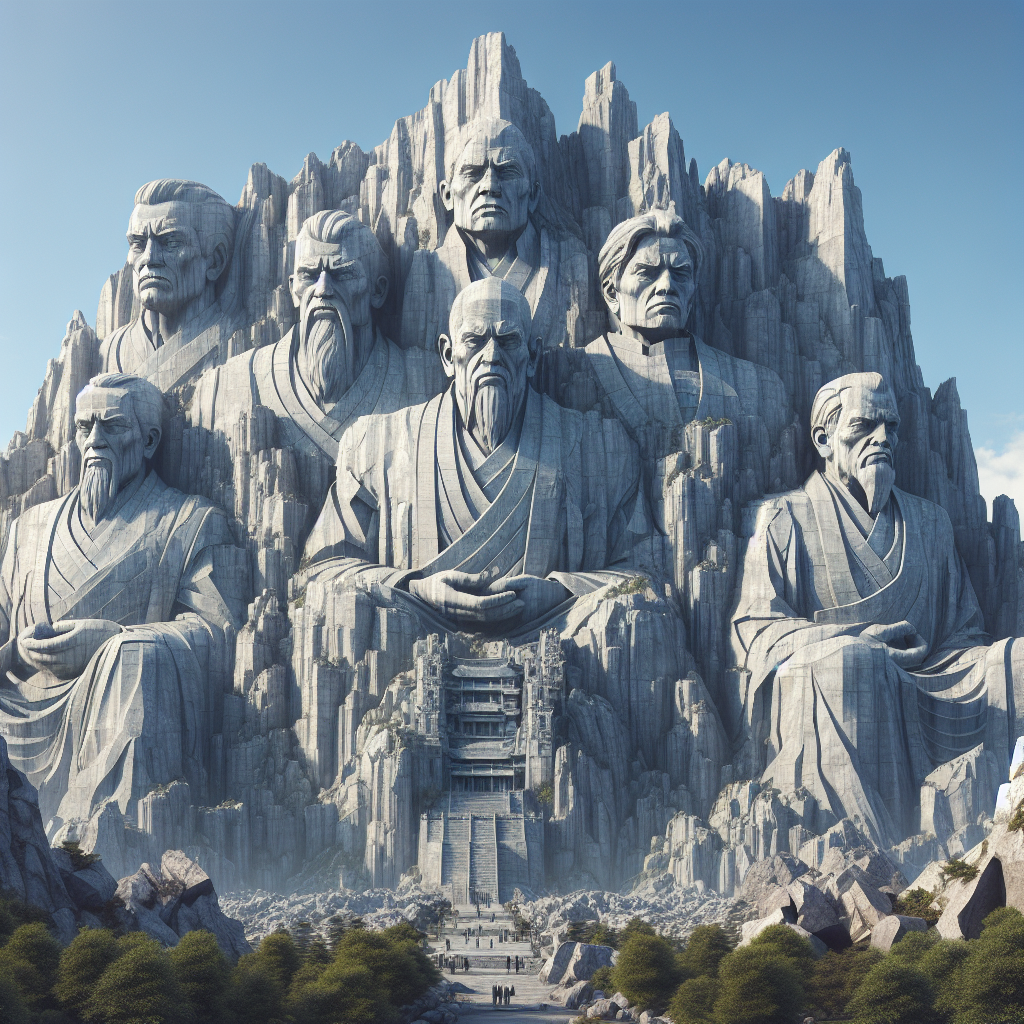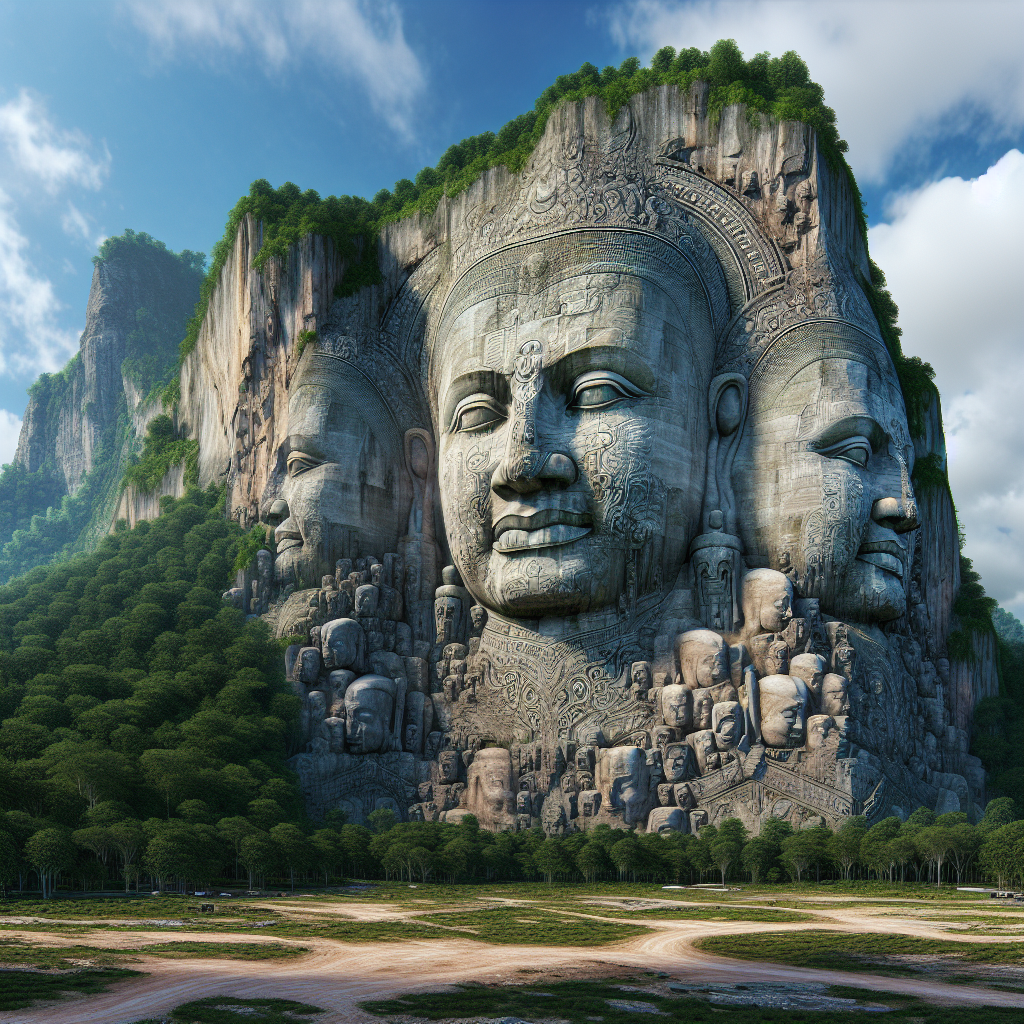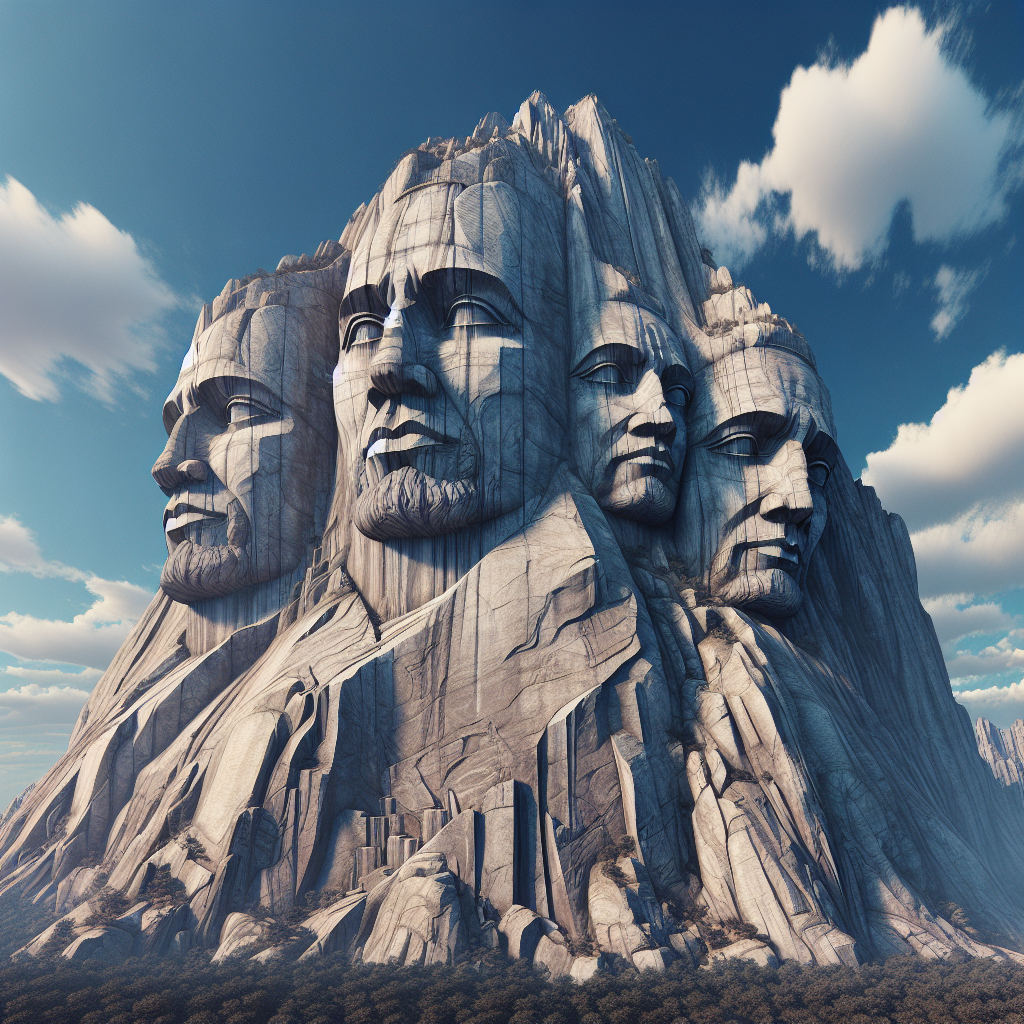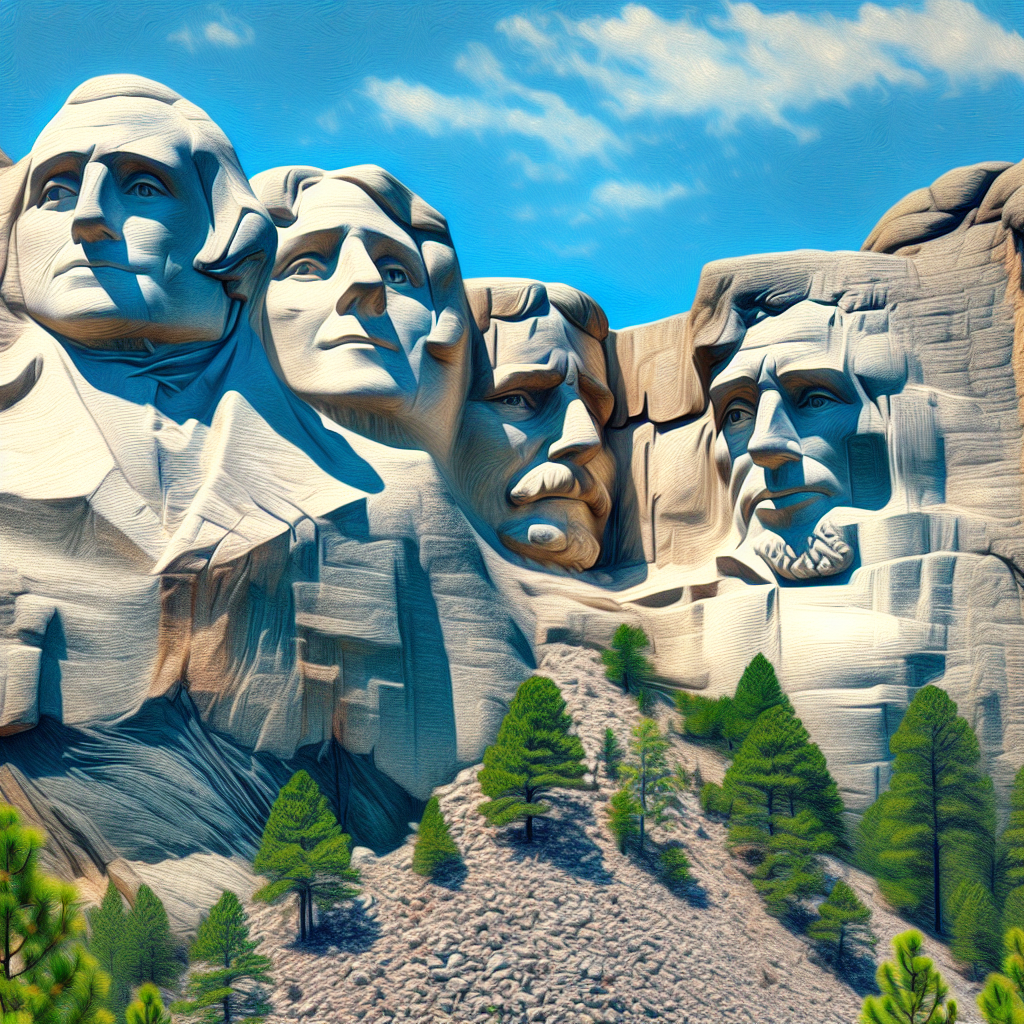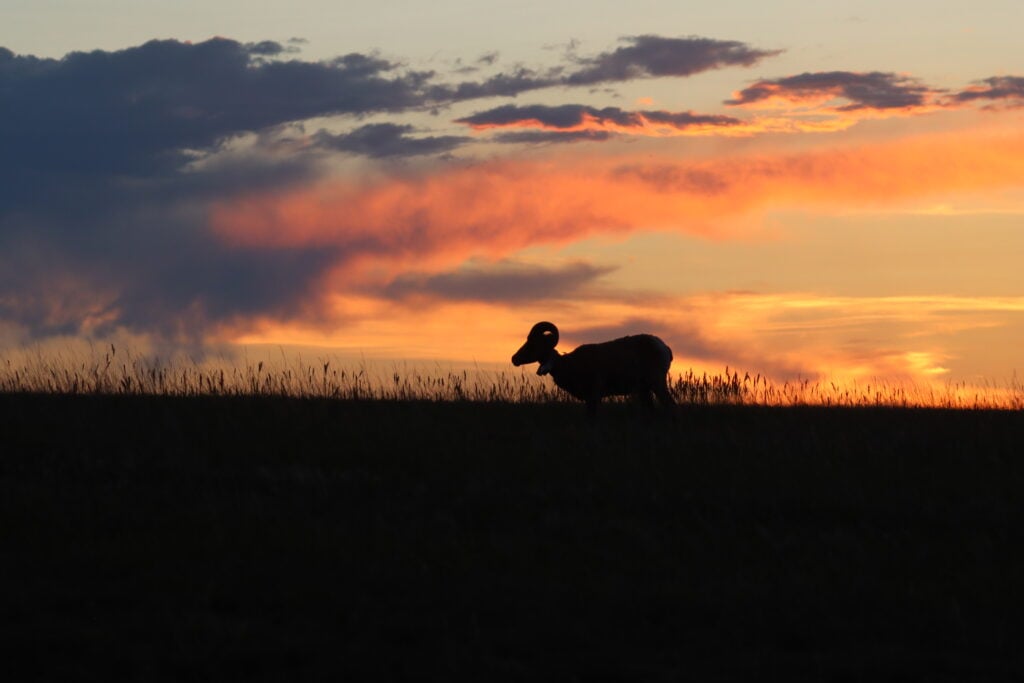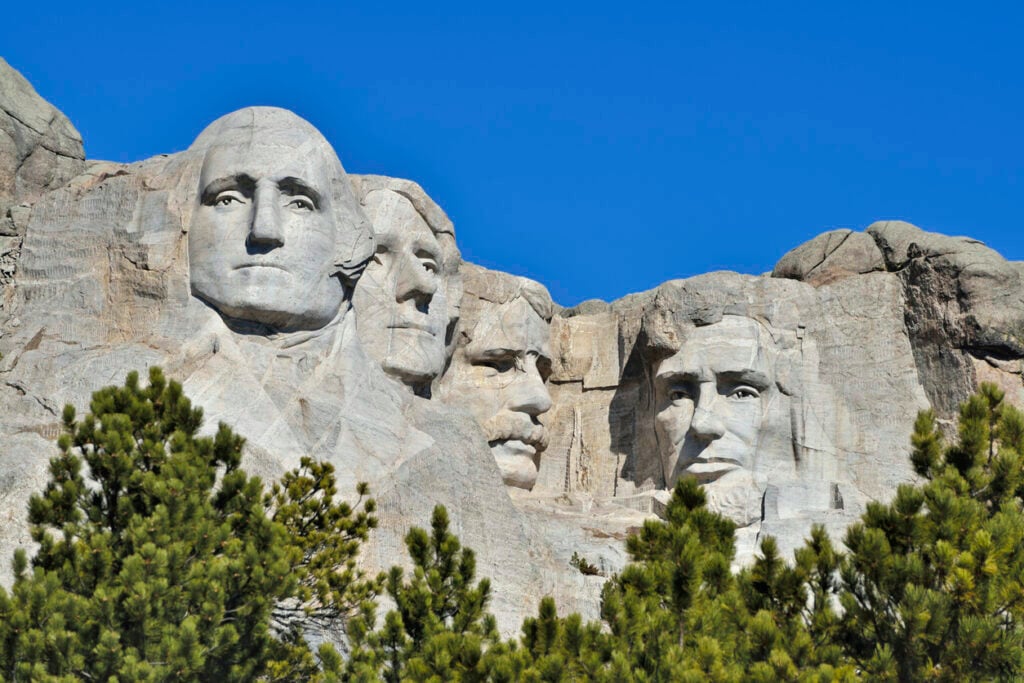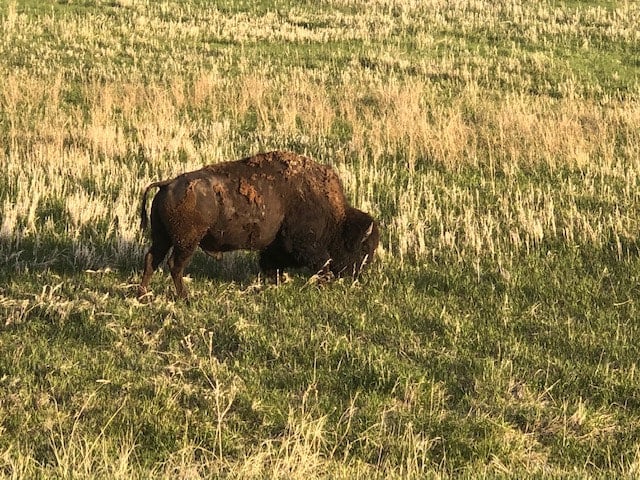Mount Rushmore stands as an *iconic symbol* of American history and culture, etched into the Black Hills of South Dakota. This monumental sculpture, featuring the faces of George Washington, Thomas Jefferson, Theodore Roosevelt, and Abraham Lincoln, is more than just a marvel of engineering; it is a tribute to the birth, growth, development, and preservation of the United States.
Designed by sculptor Gutzon Borglum, the project began in 1927 and took 14 years to complete. The four presidents were selected to represent the nation’s founding, expansion, preservation, and unification. Each face towers 60 feet high, carved into the granite mountainside, making it a remarkable feat of artistry and craftsmanship.
But what makes Mount Rushmore truly famous? It’s not just its sheer size or the historical figures it honors. The monument also captures the essence of American ingenuity and determination. It attracts over 2 million visitors annually, all eager to witness this grand symbol of national pride and to delve into the stories behind its creation.
From the initial vision to the challenges faced during its construction, Mount Rushmore’s history is as rich and complex as the nation it celebrates. Whether you’re a history buff, an art enthusiast, or simply someone seeking awe-inspiring landscapes, Mount Rushmore offers a unique and unforgettable experience.
Send a message to My XO Adventures to explore your options!
Historical Significance of Mount Rushmore
The *historical significance* of Mount Rushmore extends far beyond its stunning visual impact. This colossal monument serves as a lasting tribute to the foundational ideals and pivotal moments in American history. Each of the four presidents immortalized in stone was chosen for the unique contributions they made to the nation’s identity and legacy.
George Washington, the first president, symbolizes the birth of the United States. His leadership in the American Revolutionary War and his role in drafting the Constitution were crucial in establishing the nation. Thomas Jefferson represents the idea of expansion. As the principal author of the Declaration of Independence, he also orchestrated the Louisiana Purchase, which doubled the size of the country and opened the West for exploration.
Theodore Roosevelt, known for his progressive policies and conservation efforts, signifies the development of the United States. His role in negotiating the construction of the Panama Canal made him a key figure in establishing America’s influence on the global stage. Abraham Lincoln, revered for his leadership during the Civil War, embodies the preservation of the nation. His efforts to abolish slavery and maintain the Union have left an indelible mark on American history.
The monument itself was commissioned during a time when the United States sought to foster a sense of unity and patriotism. Conceived in the 1920s, during the aftermath of World War I, it was a period marked by a desire to celebrate and solidify national identity. Sculptor Gutzon Borglum’s vision for Mount Rushmore was not just to create a magnificent work of art but to carve a memorial that would stand the test of time, reminding future generations of the ideals upon which the nation was built.
In essence, Mount Rushmore is a historical narrative set in stone, capturing the essence of America’s journey through the contributions of its leaders.
The Artistic Marvel of Mount Rushmore
Mount Rushmore is not just a historical monument; it is also an *artistic marvel* that showcases the extraordinary skill and vision of its creators. The project was spearheaded by sculptor Gutzon Borglum, who brought to life a grand vision that fused art, engineering, and sheer determination.
Borglum’s ambition was to create a monument that would stand as a testament to American history and ideals. The scale of the project was unprecedented, involving the carving of 60-foot-tall faces of four American presidents—George Washington, Thomas Jefferson, Theodore Roosevelt, and Abraham Lincoln—into the granite face of the Black Hills in South Dakota.
The choice of granite was deliberate, as it is one of the hardest and most durable stones, ensuring the longevity of the monument. The process began with detailed models and sketches. Borglum and his team used a combination of dynamite for rough carving and jackhammers and chisels for the finer details. The precision required was immense; even the smallest mistake could have compromised the entire project.
One of the most fascinating aspects of the monument is how Borglum captured the expressions and characteristics of each president. From Washington’s resolute gaze to Lincoln’s contemplative expression, each face was meticulously crafted to reflect the persona of these great leaders. The intricate details, such as the texture of the skin and the folds of clothing, add a lifelike quality to the stone figures.
The monument took 14 years to complete, from 1927 to 1941, and required the efforts of over 400 workers. Despite the challenges—ranging from harsh weather conditions to the sheer physical demands of the work—the end result is a masterpiece that continues to awe visitors from around the world. The artistic ingenuity and craftsmanship involved in the creation of Mount Rushmore make it not just a national treasure, but a global icon of monumental art.
Hidden Secrets and Fun Facts
While Mount Rushmore is renowned for its majestic carvings, it also harbors *hidden secrets* and fascinating *fun facts* that many visitors might not know. These lesser-known aspects add an extra layer of intrigue to this already captivating monument.
**1. The Hall of Records**: One of the most intriguing secrets is the Hall of Records, a hidden room located behind Abraham Lincoln’s head. Gutzon Borglum envisioned this chamber as a place to store important documents and artifacts that tell the story of America. While the project was never fully completed, in 1998, a titanium vault was installed containing panels with texts and historical documents.
**2. The Original Plan**: Borglum’s original design was far more ambitious than what we see today. He intended to carve the presidents from head to waist, but funding and time constraints led to the completion of just the heads. Despite this, the monument still stands as a colossal achievement.
**3. Environmental Impact**: Surprisingly, Mount Rushmore’s construction had a minimal environmental impact. The granite dust and debris were carefully managed, with most of it being repurposed. This foresight ensured that the surrounding Black Hills remained largely undisturbed.
**4. Presidential Choices**: The selection of the presidents was not random. Each was chosen to represent key aspects of American history: Washington for the birth of the nation, Jefferson for its expansion, Roosevelt for its development, and Lincoln for its preservation.
**5. The Nickname**: Locals often refer to Mount Rushmore as the ‘Shrine of Democracy,’ a nickname that speaks volumes about its symbolic significance. This name underscores the monument’s role as a beacon of American ideals and values.
**6. The Annual Cleaning**: Maintaining the monument is no small feat. Every year, a team of specialists rappels down the faces to clean and inspect the carvings, ensuring they remain pristine for future generations to admire.
These hidden secrets and fun facts enrich the narrative of Mount Rushmore, transforming it from a simple tourist attraction into a monument with depth and history. Next time you visit, keep these fascinating tidbits in mind to fully appreciate the complexities and stories embedded in the stone.
Visitor Experience and Attractions
Visiting Mount Rushmore is more than just gazing at colossal stone faces; it’s an *immersive experience* filled with attractions and activities that cater to all ages and interests. Whether you’re a history buff, nature lover, or simply looking for an unforgettable adventure, Mount Rushmore has something to offer.
**1. The Avenue of Flags**: Begin your journey along the Avenue of Flags, a striking walkway adorned with the flags of all 50 states, the District of Columbia, and U.S. territories. This grand entrance sets the tone for your visit, symbolizing the unity and diversity of the nation.
**2. The Lincoln Borglum Visitor Center**: Dive into the history and craftsmanship behind the monument at the Lincoln Borglum Visitor Center. Here, you’ll find exhibits, films, and interactive displays that provide a deeper understanding of the monument’s conception and construction. It’s a must-visit for anyone eager to grasp the monumental effort that went into creating Mount Rushmore.
**3. The Presidential Trail**: For those who wish to get up close and personal with the monument, the Presidential Trail offers a half-mile loop with excellent vantage points. As you walk, you’ll encounter interpretive signs that offer insights into the lives and legacies of the four presidents. The trail is partially accessible, making it suitable for visitors of all abilities.
**4. Sculptor’s Studio**: Gain a unique perspective at the Sculptor’s Studio, where you can see original tools and scale models used by Gutzon Borglum and his team. Daily ranger talks provide fascinating details about the artistic and engineering challenges faced during the monument’s creation.
**5. Evening Lighting Ceremony**: One of the most moving experiences at Mount Rushmore is the Evening Lighting Ceremony, held from late May to September. As dusk falls, the monument is illuminated, and a patriotic program pays tribute to the nation’s history and its veterans. It’s a poignant reminder of the values that the monument represents.
**6. Junior Ranger Program**: Families with young children will appreciate the Junior Ranger Program, which offers educational activities and the opportunity to earn a Junior Ranger badge. It’s an engaging way for kids to learn about the monument and its significance while having fun.
**7. Dining and Shopping**: After exploring, relax and refuel at Carvers’ Café, which offers stunning views of the monument. Don’t forget to stop by the gift shop to pick up a souvenir that will remind you of your extraordinary visit.
Each of these attractions and experiences adds a new dimension to a visit to Mount Rushmore, ensuring that every moment is memorable. Whether you’re there for a few hours or an entire day, you’ll leave with a deeper appreciation for this iconic American landmark.
Preservation and Future of Mount Rushmore
Preserving Mount Rushmore for future generations is a monumental task that requires continuous effort and dedication. The National Park Service (NPS) undertakes extensive measures to ensure that this iconic landmark remains intact for years to come. From regular maintenance to advanced conservation techniques, the preservation of Mount Rushmore is a top priority.
**1. Routine Maintenance**: Routine maintenance plays a crucial role in the preservation of Mount Rushmore. This includes regular inspections, cleaning, and minor repairs to address wear and tear caused by natural elements such as wind, rain, and temperature fluctuations.
**2. Advanced Conservation Techniques**: To combat the effects of erosion and other environmental factors, the NPS employs advanced conservation techniques. This includes the use of modern technologies like 3D scanning and modeling to monitor the monument’s condition in detail. These technologies help in identifying potential issues early, allowing for timely interventions.
**3. Environmental Monitoring**: Continuous environmental monitoring is essential to understand the impact of climate change on the monument. Data collected from weather stations and sensors help in making informed decisions about preservation strategies. This proactive approach ensures that Mount Rushmore can withstand changing climatic conditions.
**4. Collaborative Efforts**: Preservation of Mount Rushmore is not a solo endeavor. It involves collaboration with experts in geology, engineering, and art conservation. These specialists work together to develop and implement strategies that protect the monument while maintaining its historical and artistic integrity.
**5. Public Involvement**: The NPS also encourages public involvement in the preservation efforts. Educational programs and volunteer opportunities allow visitors to contribute to the ongoing care of the monument. This fosters a sense of shared responsibility and community engagement.
**6. Future Plans**: Looking ahead, the NPS is committed to enhancing the visitor experience while ensuring the monument’s longevity. Future plans include improving accessibility, expanding educational programs, and integrating more sustainable practices in park operations.
Preserving Mount Rushmore is a testament to our dedication to safeguarding national heritage. By combining traditional methods with modern technology, we ensure that this iconic symbol of American history remains resilient. Send a message to My XO Adventures to explore your options! Join us in experiencing the legacy and contributing to the future of Mount Rushmore, making your visit not just memorable, but legendary.
